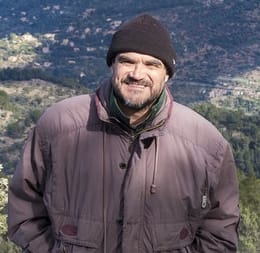
A few days ago, a Griffon Vulture made an unexpected visit to Dumitresti village, near the Putna-Vrancea Natural Park. As it turns out, the Griffon Vulture was part of an important vulture conservation project in Bulgaria.
The Griffon Vulture’s story
Griffon Vultures are a rare sight in Romania, so locals in Dumitresti were very excited when they spotted a Griffon Vulture in their village. The villagers took a video of the vulture, which helped us track some of his past.
The Griffon Vulture was born in the wild of Spain during the breeding season of 2017. They found the vulture in Extremadura alongside hundreds of other juvenile vultures suffering from malnutrition and weakness, and they were taken to wildlife rehabilitation centres to be treated. As these birds were not experiencing any significant injuries, they recovered very fast, making them perfect candidates for the reintroduction project. After spending a short period in the wildlife rehabilitation centres of AMUS (Acción por el Mundo Salvaje) and Los Hornos (Junta de Extremadura), they fully recovered, and some of the birds became part of a reintroduction project in the Stara Planina Mountains.
We, the Vulture Conservation Foundation, organised the transport of 22 Griffon Vultures, from Spain to Bulgaria in December 2017 under the Vultures Back to LIFE project. The vulture spotted in Romania, was one of the birds that we transported. The birds travelled by land passing through France, Italy, Austria, Hungary and Romania, before arriving in Bulgaria, covering over 4,000 km. After their arrival in Bulgaria, they spent a quarantine period at the Green Balkans Wildlife Centre in Stara Zagora, and the team then distributed among three release acclimatization aviaries in Vratsa, Sliven and Kotel. At the aviaries, the vultures had time to get used to the Balkan Mountains environment, which would help them adapt easier when released in the wild. Ahead of their release, each vulture was marked with a metal ring and matching wing-tags, which enabled us to identify this individual in Romania! The Green Balkans released the vulture to nature this April in Sinite Kameni, Sliven and the observation in Romania is the first record of the bird ever since.
Griffon Vultures in Romania

Griffon Vultures used to be widespread species in Romania, but they went extinct as nesting birds in the country during the 1950s. Human activities were the cause of this devastating decline. In the past few years, a limited number of solitary individuals were recorded in Romania, but they are still a very rare sighting.
The reintroduction project in Bulgaria
The Reintroduction Project of the Griffon Vulture in Bulgaria was mainly implemented within the Life Project: “Vultures Return in Bulgaria” LIFE08 NAT/BG/278, led by Green Balkans, which finished in 2016. The Griffon Vulture transportation from Spain to Bulgaria was organised within the new Life Project: “Тhe Bright Future for Black Vulture” LIFE14 NAT/BG/649, which focuses on finalising the griffon vulture reintroduction and restoring a healthy Cinereous Vulture population in Bulgaria.




